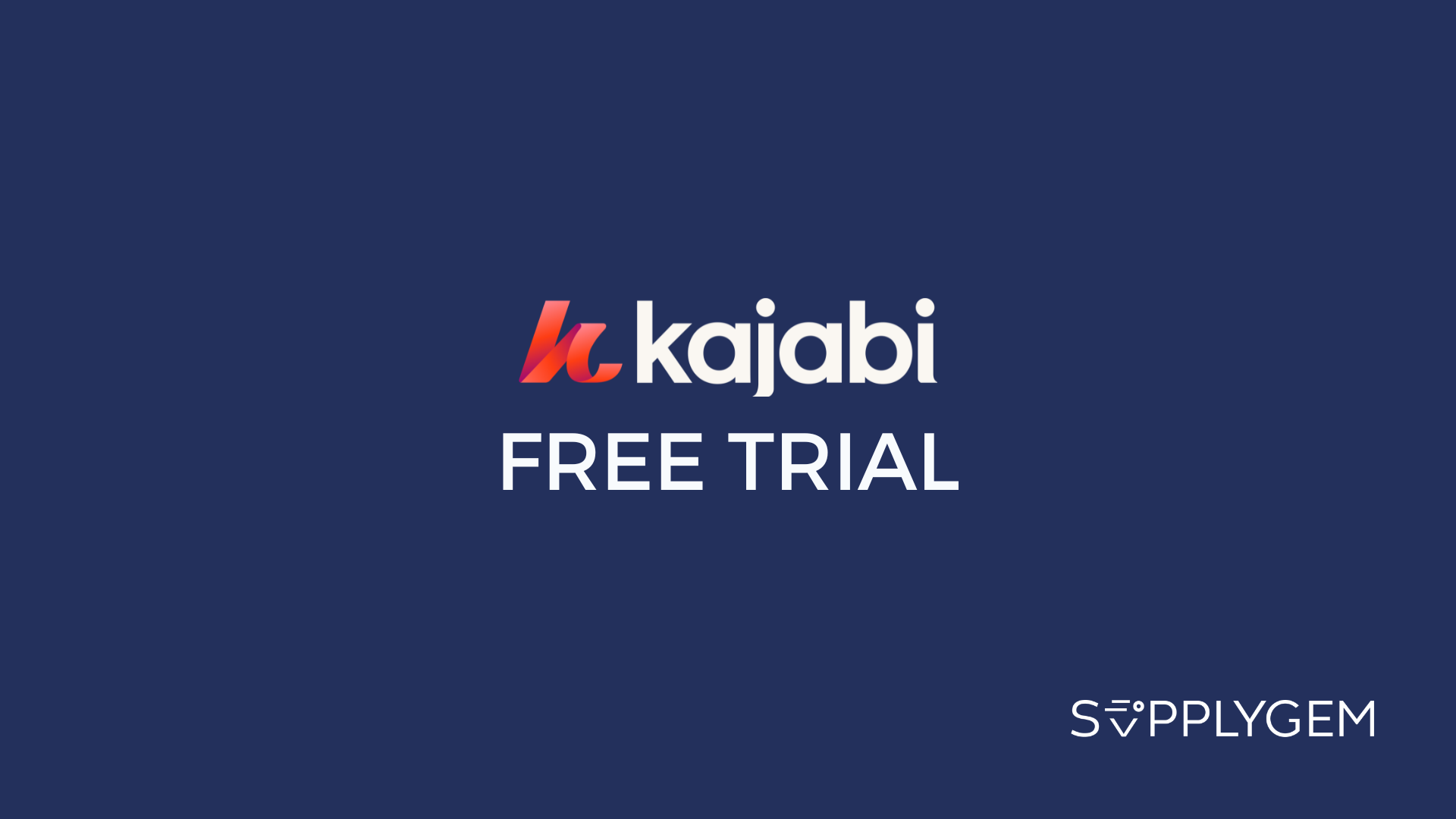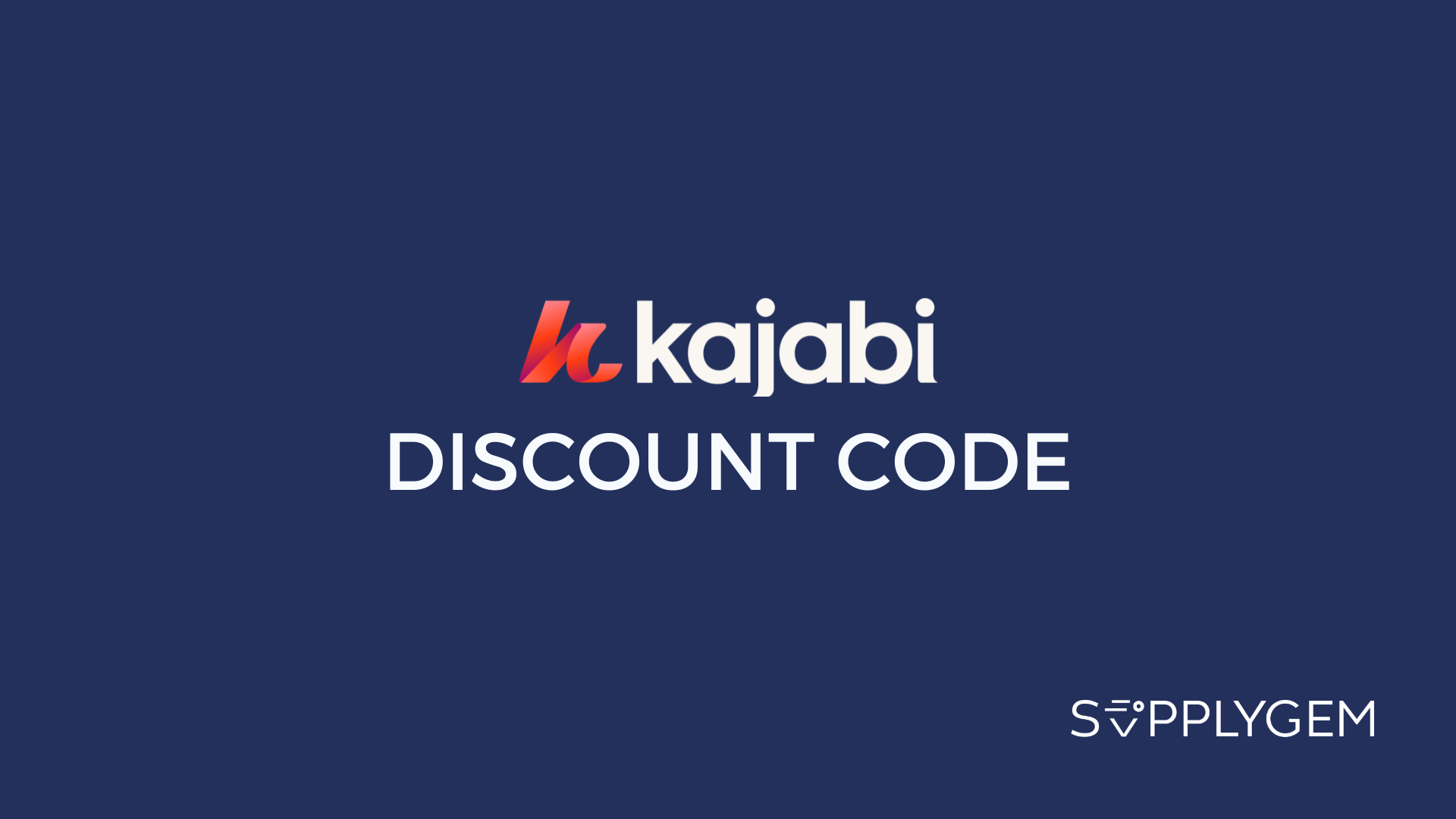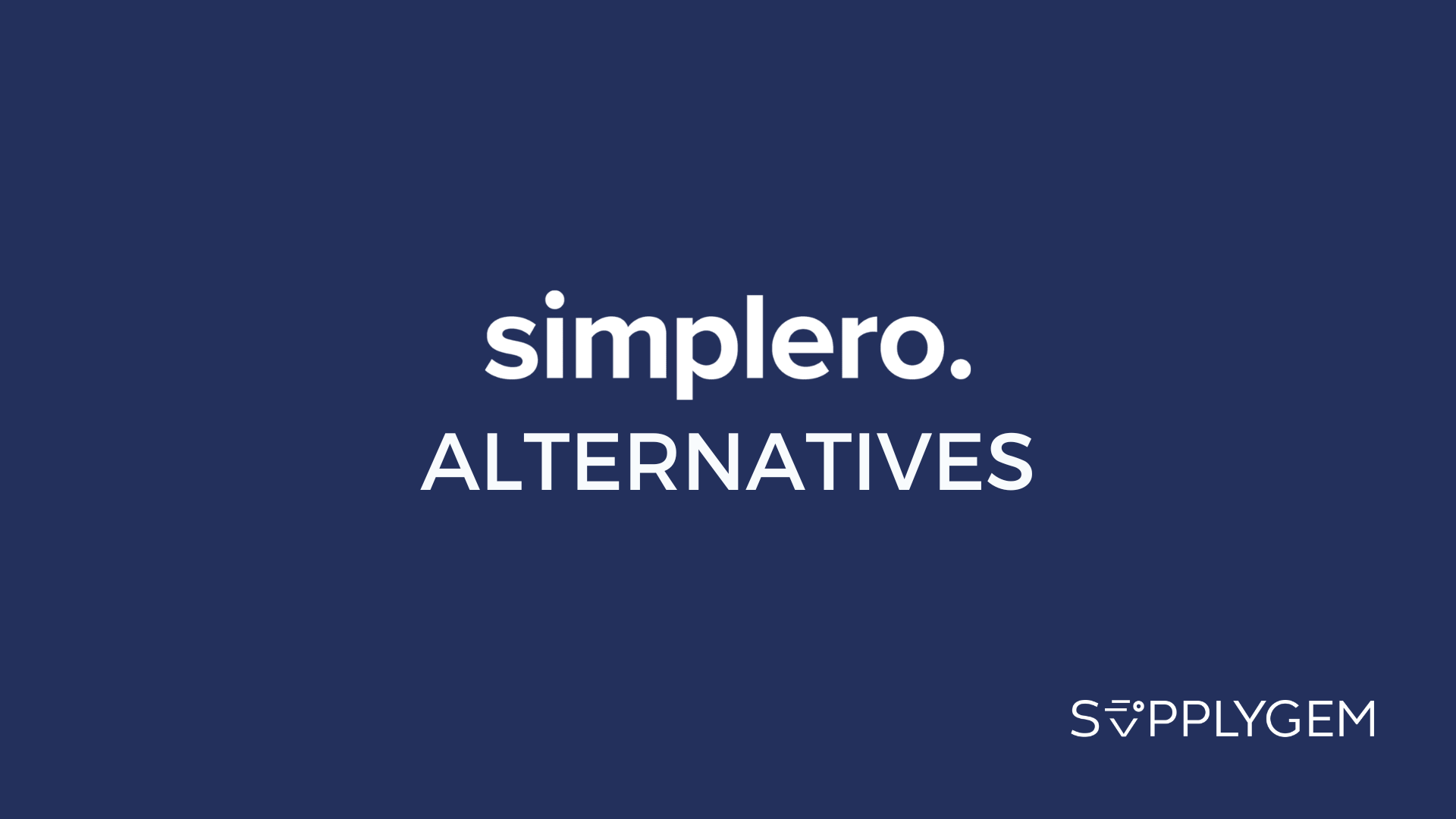Kajabi and ConvertKit serve very different purposes, even if there is an overlap of features.
The question is, do you want a platform that specializes in one specific feature, or do you want all of them under one roof?
Key Takeaways:
- Kajabi is an all-in-one platform for online learning content creators
- ConvertKit is limited to sending emails and selling digital products
- ConvertKit has a free plan, while Kajabi costs from $89/month
Kajabi vs. ConvertKit: Quick Overview
| Feature | Kajabi | ConvertKit |
|---|---|---|
| SupplyGem Platform Ranking | No. 2 | Not ranked |
| SupplyGem Score | 9.5 | 7.5 |
| Trustpilot Score | 4.0 | 1.9 |
| Costs From | $89/month | Free plan |
| Free Trial | 30-day free trial for any plan | 14-day free trial—no card required |
| Money-Back Guarantee | 30 days | 30 days |
| Platform Pros | – Complete all-in-one platform – Versatile product creation tools – Excellent user experience – Good for new businesses with options for existing businesses to scale | – Free plan available – High email deliverability rates – Modern templates and design elements – Connect with and be recommended by other users |
| Platform Cons | – High entry-level pricing – Customer service is hit or miss – Templates could be better | – Limited to emailing – Extremely poor online reputation – Easy to outgrow |
| Best For | Digital learning content creators | Email subscriber outreach |
Kajabi vs. ConvertKit: The Main Differences
Both Kajabi and ConvertKit (now simply called “Kit”) are top-rated platforms, but they have completely different goals, even if some features are fairly similar.
Kajabi is an all-in-one platform designed specifically for learning content creators. The idea is that it contains all the creation, sales, and marketing tools needed to run a business without the need to rely on third-party platforms.
In contrast, ConvertKit’s primary focus is email marketing and features advanced tools to build high-converting email campaigns.
Yes, Kajabi also has email marketing, but it’s not as in-depth as ConvertKit’s tools.

Additionally, the type of products you can create and sell differs between the platforms.
Kajabi gives you the whole kaboodle: coaching, courses, digital downloads, podcasts, and more. With ConvertKit, you’re limited to digital downloads and subscriptions.
In short, Kajabi has way more functionality, but it isn’t as great at email marketing as ConvertKit.
Let’s Talk About Affordability
Kajabi has never been and will probably never be a cheap platform. Prices start from $89 per month for a plan with very low feature limits.
But consider the features you do get for the price. And Kajabi is considered the gold standard among platforms of its kind, which is bound to bump up the price somewhat.

ConvertKit has a free plan for up to 1,000 subscribers, but if you want access to the fancier features, you’ll have to pay at least $29 per month. Then, the price increases with your subscribers to as much as $2,500 per month, so the reality is that it’s not as cheap as it looks.
Then, consider that the feature set is based around sending emails. It doesn’t have a course builder, payment processor, or any other marketing tools.
Here’s a quick overview of the costs of both platforms:
| Plan | Monthly cost | Monthly cost paid annually | Total annual cost | Discount for paying annually |
|---|---|---|---|---|
| Kajabi Kickstarter | $89 | $71 | $852 | 20% |
| Kajabi Basic | $149 | $119 | $1,428 | 20% |
| Kajabi Growth | $199 | $159 | $1,908 | 20% |
| Kajabi Pro | $399 | $319 | $3,828 | 20% |
| Kit Newsletter | Free | N/A | N/A | N/A |
| Kit Creator | $29-$2,299 | $25-$1,916 | $300-$22,992 | 13% |
| Kit Creator Pro | $59-$2,599 | $50-$2,166 | $600-$25,992 | 15% |
Both platforms offer a nice discount for paying upfront for the year, and both have a 30-day money-back guarantee.
What Can You Sell on Each Platform?
ConvertKit: Simple Digital Products

ConverKit actually claims that you can sell any type of digital product or service through its platform. And while that’s technically true, it doesn’t provide the tools to create or facilitate them.
So, you can create a product listing for a course or a series of coaching sessions, but you’ll have to build or run them using another platform (like Kajabi, hah!).
If you want to use ConvertKit and ConvertKit only, you’re pretty much limited to selling digital downloads and newsletters.
Kajabi: Membership Sites and Learning Products

Kajabi is a whole different deal when it comes to selling products.
It features a detailed course builder, plus the ability to create full-on membership sites containing a variety of content.
But it doesn’t stop there. It has a community app that you can monetize and tools for running coaching sessions (like a native calendar and scheduling app and in-built livestreaming). Then, you have all your basic products, such as digital downloads and newsletters.
It’s even possible to set up and monetize podcasts with Kajabi, though you can’t actually record the sessions using the platform.

And, as I said, you can bundle any combination of these products together and sell a solution that aligns precisely to your audience’s needs.
In short, if you’re looking for a platform that lets you grow and scale, ConvertKit can get frustrating quickly, whereas Kajabi allows you to expand without hitting a wall.
How Do Their Marketing Tools Compare?
ConvertKit: Better for Email Deliverability and Customization

Since ConvertKit is built around emailing, this is obviously something it does very well and certainly better than Kajabi.
The template builder is great, offering a wide range of modern, prebuilt blocks and numerous design elements.
The designer takes a bit of getting used to, but once you know how it works, creating emails becomes a pretty fast job.

Scheduling and creating email sequences is straightforward, and you can tag and segment audiences so your emails reach the right eyes.
Of course, you can easily automate everything, including custom reaction emails that are sent according to your audience’s individual responses.

To grow your list, ConvertKit has a good selection of landing page templates and its own form builder, both of which are fully customizable.

What I really like, though, is its recommendations feature. The platform enables you to connect with fellow ConvertKit creators and have them recommend you to their audience.
This is a great way to grow your list without relying on paid ads.
If you do want to go down the paid ads route, a sponsor network is available that helps you find and build relationships with advertisers.

Lastly, ConvertKit boasts an email deliverability rate of 99.8% and a 40% average open rate, so if that’s a concern of yours, you don’t need to worry about it if you use this platform.
In all, ConvertKit does email very well, so if this is central to your business, it could be a better option than Kajabi.
Kajabi: A Broader Focus, Including Funnels
Clearly, Kajabi focuses on more than just emailing, so if you prefer a broader approach to marketing, this platform is going to offer you more.

Let’s start with the email feature.
Personally, I feel that the design tool is easier to master than ConvertKit’s. However, the templates aren’t as appealing. That said, there are more design elements to choose from, and the drag-and-drop functionality is just more pleasant to deal with.
The two platforms are very similar when it comes to scheduling abilities, A/B testing, and setting up automated sequences. But, ConvertKit definitely wins over Kajabi for email deliverability and conversion rates.
So, where does Kajabi stand out then?

You can find the answer by looking at the funnels feature. Rather than simply relying on email, Kajabi allows you to build complete web-page-based, automated funnels that guide users to a specific goal.

The workflow screen is highly visual and simple to navigate, and Kajabi offers numerous prebuilt funnels for various purposes. If you want to incorporate email, you can. Just add them to your funnel, and you’re ready to go.

Additionally, Kajabi has plenty of options for landing page templates. It’s got a form builder, and my favorite—the survey builder—which you can use to drill down audience preferences and gather more insights.
Regarding automation, it’s more sophisticated than ConvertKit, with a wider range of capabilities that incorporate customer relationship management, marketing, and back-end admin tasks.
Which Offers a Better User Experience?

Here, I’m going to have to say Kajabi. When comparing platforms of its kind, it doesn’t always provide the most advanced features, but what sets it apart is the user experience.
The developers have gone out of their way to make the platform as user-friendly as possible. You’re guided through the features in a non-intrusive way, and when you use a tool for the first time, it doesn’t take long to figure it out.
Its interface is modern and clean, and its help resources are always kept up-to-date and simple to follow.

ConvertKit is also user-friendly and features a nice-looking interface. However, it’s just not up to par with Kajabi, and I found its features to be somewhat unclear in their functionality.
6 Reasons Why Kajabi Will Scale Your Business
Okay, we’ve established that Kajabi offers significantly more features than ConvertKit. But in case you weren’t convinced, here are a few more reasons.
1. All-In-One Functionality

Kajabi is designed to essentially act as a business-in-a-box. In other words, you can set up and run everything without needing integrations or third-party apps.
Everything down to a native payment processor is included on its platform, so this is great news for anyone wanting an easy, straightforward life.
In contrast, if you plan to expand with ConvertKit, you will have to use integrations. There’s no other way to gain additional functionality.
2. Includes a Website to Centralize Your Brand

Although it’s the weakest feature on the Kajabi platform, you can still set up and launch a website to act as the central point of your business.
You can use it to host all your products, add a blog to drive traffic, and use it to showcase what you have to offer.
Okay, so it’s not WordPress, but it’s a big step up from the basic landing pages offered by ConvertKit.
3. Build a Dedicated Community

I love the community app in Kajabi because there’s so much you can do with it.
It gets everyone away from the distractions of Facebook and provides a dedicated space to engage and monetize your audience.
Besides the usual chat threads, you can set up and run events and challenges, jump on a livestream, and build in gamification with leaderboards, points, and badges.

This is way more entertaining than an email. Therefore, it’s a super powerful tool to leverage if you want to engage your audience in more meaningful ways.
In terms of monetization, you can create subscription-based membership tiers, charge for individual spaces within the community, and utilize an “offer block” to promote existing products on the community page.
4. Create a Branded Mobile App

Since most online activity takes place on a mobile phone, it’s never been more essential to offer customers access to your products via a mobile app.
Kajabi gives you a choice in this area. It offers two standard user apps: one for accessing courses, the other for communities. Although these are free to use, they do feature the Kajabi branding.

Yet, you can go one better than that and take advantage of Kajabi’s branded mobile app service. This allows you to create a completely customized app perfectly matched to your business aesthetic and purpose.
Yes, it costs extra. But you’ll be levelling up the customer experience and making your services feel like they were designed and created by you.
5. Better Tools for Sales and Conversions

ConvertKit doesn’t have a lot to shout about in terms of sales tools. But Kajabi really shines here, too.
You can set up any type of payment structure you like for your products, including subscriptions, installment plans, and even “pay what you feel.” But now, pay later is even possible via Klarna, giving your customers the ability to select the most affordable option.

You can also add order bumps, upsells, and downsells to your checkout pages, increasing the chances of bringing in extra revenue.
Additionally, you can use coupon codes if you plan to run promotions for your products.
And with more places available to display your products (funnels, emails, website, community, member login, etc.), you have more opportunities to get your offers in front of eager customers.
6. Broaden Your Product Range

This is worth mentioning again because there’s only so much you can earn through selling digital downloads. Since these are typically low-cost items, at some point, you’ll likely want to create higher-priced products that bring in more revenue.
Kajabi lets you do that with ease. With numerous options and flexibility, you can continue scaling without ever leaving the platform or relying solely on email to distribute your offers.
Why ConvertKit Works for Subscriber-Centric Businesses
Pay for What You Use

Although ConvertKit can get way more expensive than Kajabi, you do have to be sending out hundreds of thousands of emails to get to that price point.
But since its pricing is based on the number of subscribers you have, it’s actually very affordable, especially when you’re just starting out.
This means you don’t have to commit to an expensive plan just to kick off your business. As your subscriber list grows, you can upgrade your plan to fit, meaning you never pay over the odds for what you get.
This, along with the ConvertKit free plan, can be an attractive alternative for those who don’t want to deal with plan limits and expensive upgrades, which is what you’ll get if you go with Kajabi.
Centered Around Email

For some businesses, email is everything, and it doesn’t make sense to go for a “jack-of-all-trades” platform like Kajabi if you don’t intend to make good use of the other features.
I also feel that ConvertKit is perfect if you already have an established business, want to capitalize on audience outreach, and haven’t got a tool in place yet to do it.
Let’s be clear, ConvertKit has a better email tool than Kajabi, so if this is all you need, it makes sense to go with this platform.
Simple, Easy Workflows

I know I said that Kajabi’s user experience is nicer than ConvertKit’s. And it’s true, it is better. But that’s not to say that ConvertKit isn’t easy to use.
Particularly regarding its workflows. Since you don’t have other features to deal with like you do with Kajabi, setting up workflows is incredibly straightforward.
Plus, I love that you can create custom email sequences based on subscriber behavior, which allows for more tailored content. We all know that creates a higher conversion rate.
Bottom Line: Which Platform Should You Go For?

By now, you should have a pretty good idea of which platform will be most appropriate for your needs.
If you want to focus on email only, ConvertKit is the obvious choice. But if you need wider marketing tools and product creation features, Kajabi won’t let you down.
If your business isn’t off the ground yet, think about what you intend to sell, how you plan to sell it, and whether you’re likely to expand from that in the future.
The answers to these questions will reveal exactly which platform is going to work for you.
Frequently Asked Questions
Is Kajabi or ConvertKit Better for Email Marketing?
ConvertKit is better than Kajabi for this purpose because it’s centered around email marketing and has a 99.8% deliverability rate and a 40% average open rate. It also has higher-quality design features and deeper audience segmentation.
Is Kajabi or ConvertKit Cheaper?
At face value, ConvertKit is cheaper than Kajabi because it has a free plan and paid plans start from $29 per month. In contrast, Kajabi starts from $89 per month. However, if you consider the features, Kajabi offers higher value versus price.
Can I Use Kajabi with ConvertKit?
Yes, you can integrate Kajabi with ConvertKit and send ConvertKit emails to Kajabi contacts and direct them to your Kajabi offers. The integration is native, meaning you just need to copy your ConvertKit API key and paste it into Kajabi.














